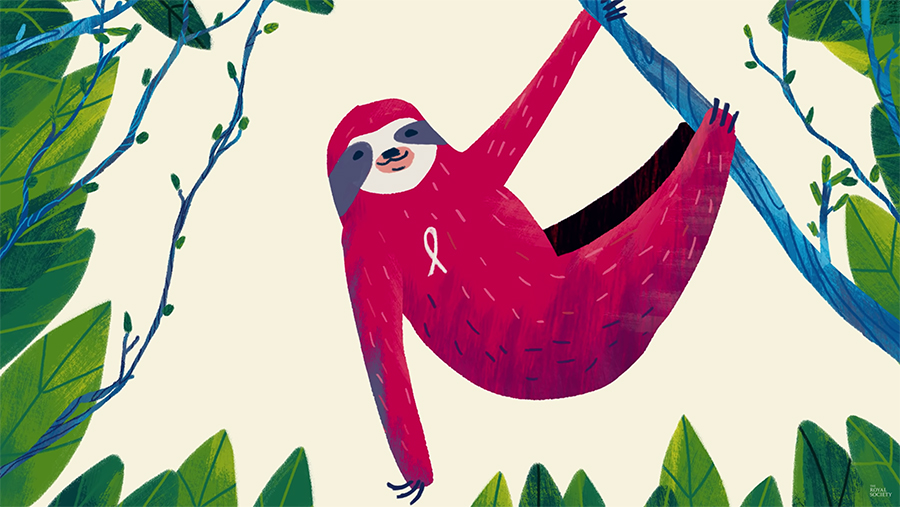What is biodiversity and why do we need it? Consider a spider monkey of Central and South America’s tropical rain forests. How does what it eats affect someone in any other part of the world?
“This spider monkey is an unwitting climate activist. Large fruit eaters such as this one spread the seeds of tropical hardwood trees in their dung, helping to build up forests, which absorb carbon dioxide from the atmosphere. And this is just one of perhaps millions of interactions that guarantee a healthy and functioning planet.”

In this animation from The Royal Society, Sir David Attenborough explains why we need nature and what we can do now to save it from the intense pressure it’s under from human activity. Design and animation by Oof. More from the Royal Society:
“There are lots of ways that humans depend upon biodiversity and it is vital for us to conserve it. Pollinators such as birds, bees and other insects are estimated to be responsible for a third of the world’s crop production. Without pollinators we would not have apples, cherries, blueberries, almonds and many other foods we eat. Agriculture is also reliant upon invertebrates – they help to maintain the health of the soil crops grow in. Soil is teeming with microbes that are vital for liberating nutrients that plants need to grow, which are then also passed to us when we eat them. Life from the oceans provides the main source of animal protein for many people.”

“Trees, bushes and wetlands and wild grasslands naturally slow down water and help soil to absorb rainfall. When they are removed it can increase flooding. Trees and other plants clean the air we breathe and help us tackle the global challenge of climate change by absorbing carbon dioxide. Coral reefs and mangrove forests act as natural defences protecting coastlines from waves and storms.”

“Many of our medicines, along with other complex chemicals that we use in our daily lives such as latex and rubber, also originate from plants. Spending time in nature is increasingly understood to lead to improvements in people’s physical and mental health. Simply having green spaces and trees in cities has been shown to decrease hospital admissions, reduce stress and lower blood pressure.”


There are lots of things we can do to protect and work with nature. Watch these natural climate solutions next: How to Save Our Planet with Sir David Attenborough.
Plus, more from TED-Ed: Why is biodiversity so important?
And more about carbon storage, ecosystems, conservation, seed dispersal, and solutions for all sorts of challenges.
Bonus: How to solve every global crisis.
Curated, kid-friendly, independently-published. Support this mission by becoming a sustaining member today.

